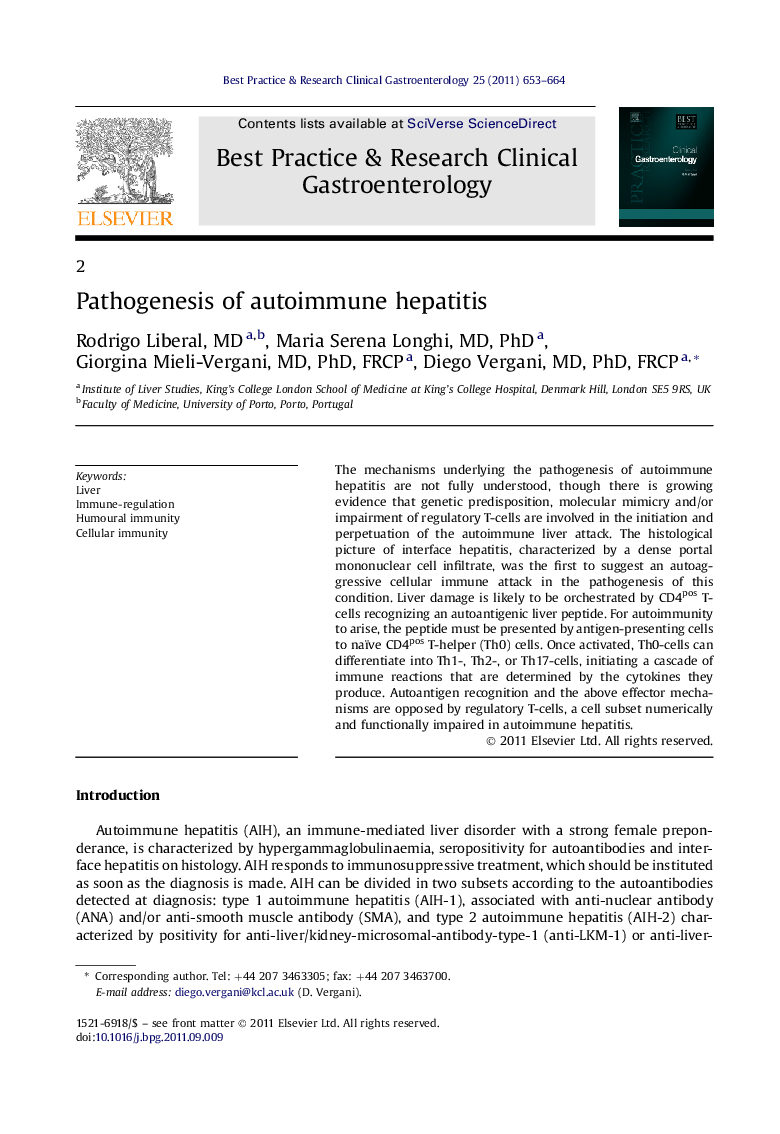| Article ID | Journal | Published Year | Pages | File Type |
|---|---|---|---|---|
| 6086504 | Best Practice & Research Clinical Gastroenterology | 2011 | 12 Pages |
The mechanisms underlying the pathogenesis of autoimmune hepatitis are not fully understood, though there is growing evidence that genetic predisposition, molecular mimicry and/or impairment of regulatory T-cells are involved in the initiation and perpetuation of the autoimmune liver attack. The histological picture of interface hepatitis, characterized by a dense portal mononuclear cell infiltrate, was the first to suggest an autoaggressive cellular immune attack in the pathogenesis of this condition. Liver damage is likely to be orchestrated by CD4pos T-cells recognizing an autoantigenic liver peptide. For autoimmunity to arise, the peptide must be presented by antigen-presenting cells to naïve CD4pos T-helper (Th0) cells. Once activated, Th0-cells can differentiate into Th1-, Th2-, or Th17-cells, initiating a cascade of immune reactions that are determined by the cytokines they produce. Autoantigen recognition and the above effector mechanisms are opposed by regulatory T-cells, a cell subset numerically and functionally impaired in autoimmune hepatitis.
